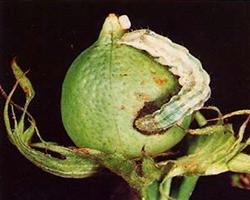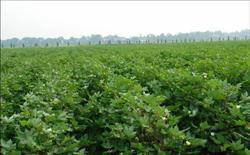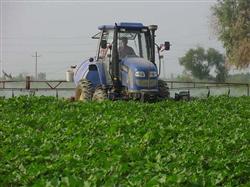Cotton planting technology: how to control diseases and insect pests in cotton flower and boll stage?

How to prevent and control diseases and insect pests in cotton flower and boll stage? Please guide the cotton flower and boll stage with reference to the following methods for the prevention and control of diseases and insect pests: first, heavy occurrence and many kinds of cotton diseases and insect pests are predicted and analyzed. This year, cotton diseases and insect pests will occur moderately and heavily in some areas. In particular, a variety of diseases and insect pests will be intertwined into pests at the flower and boll stage, posing a threat to cotton production. There are mainly cotton aphid, blind Toona sinensis, red spider, Verticillium wilt and late red leaf stem blight and so on. Some areas of cotton bollworm still need to be controlled, especially the self-retained species can not be ignored. Second, climatic conditions are conducive to the occurrence of diseases and insect pests. According to the forecast of the meteorological department, high temperature and humidity in June and July is also a critical period for cotton budding, flowering and boll setting, while high temperature and humidity is conducive to the prevalence of cotton wilt and Verticillium wilt. There is often the phenomenon of "a seedling dies in the next rain". Third, the population of diseases and insect pests in insect-resistant cotton field has changed. after large-scale planting of transgenic insect-resistant cotton, the occurrence situation of cotton bollworm has been effectively controlled, but secondary diseases and pests such as cotton blind stink bug and red spider gradually rise and pose a new threat. In the late growth stage of cotton, red leaf stem blight caused by potassium deficiency occurred seriously, which led to premature senescence and reduced yield of cotton. Fourth, farmers' understanding of the insect-resistant effect of insect-resistant cotton is insufficient. Transgenic cotton with Bt gene is not "insect-free cotton". Especially during the period of the third and fourth generations of cotton bollworm in our province, the resistance of insect-resistant cotton has been significantly reduced, and the flower, bud and boll resistance of cotton reproductive organs are the weakest. at the same time, some cotton bollworm eggs produced on these reproductive organs hatch and survive, causing harm. Insect-resistant cotton is not resistant to APHIS gossypii, cotton thrips, cotton leaf mites and whitefly, which often cause new harm if not controlled. For this reason, it is suggested to pay attention to the following key points of control: first, cotton bollworm resistant cotton varieties generally do not need spraying to control the second generation cotton bollworm, and conventional cotton control of the second generation cotton bollworm should be in the peak spawning period of adults. In order to master the control index and application technology, when the cumulative number of eggs on 100 buds and bolls of the third generation cotton bollworm reaches 100 or there are 10 larvae, chemical control should be carried out. Chlorpyrifos, methamyl salt, phoxim, probophos, endosulfan and so on can be selected for control. Advocate spraying botanical insecticides such as matrine or Helicoverpa armigera virus preparations, and half of the above insecticides combined with spraying technology to reduce pollution and reduce the source of insects in the coming year. However, Bt biological agents are prohibited in insect-resistant cotton fields. Second, on the basis of grasping the seeds treated with chemicals, cotton wilt can be sprayed once at an interval of 10 days, generally spraying about 3 times. Of course, where there are conditions, it can be rotated with Gramineae crops for more than 2 years. Fulvic acid salts, allicin plus carbendazim, mancozeb and so on can be selected for prevention and treatment, and some nutrients can be added to improve plant disease resistance. Third, the control of cotton blind stink weevil advocates early control. Generally, about 3 nymphs are sprayed at the cotton seedling stage, and large-scale unified control is carried out at the same time to control the harm of the first generation of blind Toona sinensis in cotton fields. In the flower and boll stage, when the number of 100 plants reaches 20 to 25, it should be controlled immediately, and half-quantity of acetamiprid, imidacloprid, malathion, chloramidophos and other pesticides can be sprayed. The time of prevention and control should be before 9: 00 in the morning and after 4: 00 in the afternoon, aim at tender head, edge center and bud bell when spraying, and emphasize uniform penetration and large-scale unified prevention and control. Be careful not to spare water or medicine, do not bring dew spray. Fourth, cotton red leaf stem blight is mainly a disease caused by potassium deficiency. Cotton grows vigorously at flowering and boll stage, and potassium demand increases greatly. If potash fertilizer supply is insufficient in the field, cotton red leaf blight is easy to occur. Can be combined with the prevention and control of Verticillium wilt, early spraying 0.2%-0.3% potassium dihydrogen phosphate solution, once every 7 days, to spray 2 times 3 times in a row. If there are conditions, we can pay attention to the technology of formula fertilization and apply potash fertilizer according to the actual needs. Fifth, cotton aphid and cotton red spider cotton aphid can choose imidacloprid and acetamiprid, and red spiders choose half-dose of avermectin and organophosphorus pesticide to spray. Attention should be paid to the control of cotton aphids and red spiders before the spread of insect pests, if the number of insect pests is very large and has spread throughout the field, the difficulty of control will be greatly increased. Click to get more cotton planting technology click to get more food crop planting technology
- Prev

Cotton planting technology: how to fertilize cotton in flower and boll stage?
How to fertilize cotton in flower and boll period? Please guide the flower and boll stage is the key period for cotton to gradually change from vegetative growth to reproductive growth, and it is also the period when cotton needs the most fertilizer. For cotton in full bloom, the partial application of nitrogen fertilizer will lead to cotton flourishing and crazy because the vegetative growth is still parallel to reproductive growth.
- Next

Cotton planting technology: cotton flower boll period how to spray potassium fertilizer?
How to spray potash fertilizer in cotton flowering and boll stage? Please introduce the method cotton enters the late flowering and boll stage, the ability of root system to absorb nutrients is weakening day by day, while the buds and bolls on the ground continue to grow and develop, potassium fertilizer should be sprayed in time in the cotton field lacking fertilizer or the cotton field with more bolls in the middle and lower parts and poor nutrition in the upper part. Potassium sulfate is the most suitable for potassium fertilizer application.
Related
- The first cup of black tea in spring, the flavor and history of tea gardens in Kenya, Africa
- The computer can not only choose potatoes, but also grow tea rice. AI will grow winter oolong tea champion.
- It is not only the inflated tea bitten by insects, but also engraved with the four seasons tea in Beipu.
- The Oriental Beauty Tea Festival in Zhuxian County takes the stage at the weekend to experience the plus-size feast of oil tea.
- & quot; Oriental Beauty Tea & Exploration of Emei in Hsinchu, the hometown of quot;
- The new variety of strawberry "Tainong 1" dessert is the first choice with mellow aroma. Crimson gorgeous
- History of Tea in Taiwan: from Wild Inner Mountain to Export Tea Garden
- Two types of Taiwan Oriental Beauty Black Tea won the British three-Star Award for Childhood Tea Xiang Zhang Jiaqi changed from pilot to champion tea maker.
- Banana species and varieties: the planting history of Taiwan Xianren banana and dwarf banana is long, is banana disease resistant?
- Coffee planting Technology: Qianjie Coffee from Seedling to harvesting

